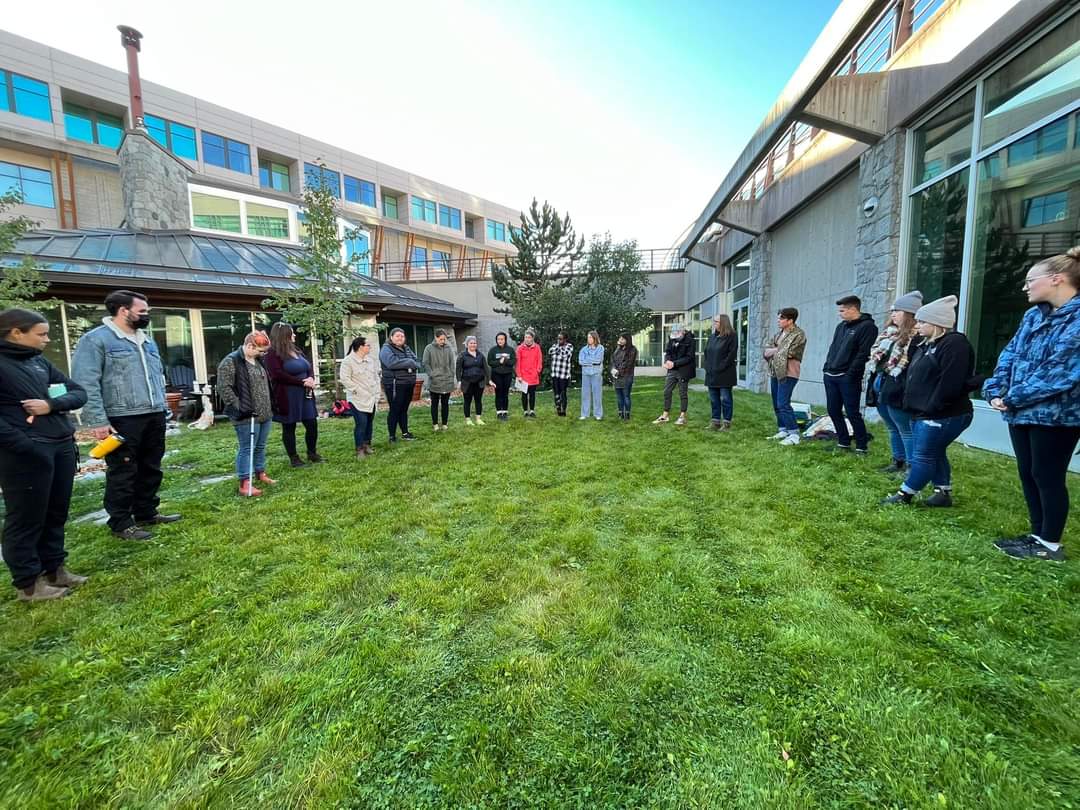Prior to doing the blanket exercise, I watched the “Justice for Aboriginal People”- It’s time” video. I’ve heard “why don’t you people just get over it” as a child in Elementary school and it seems to have continued over all these years, devastating to hear. In the video, it mentions that when the Europeans first arrived things seemed civil and the Aboriginal Peoples were kind to share their food and survival techniques. After some time, The Europeans began to discuss land ownership and started forcing the Aboriginals onto treaties. That was hard to hear, as the Europeans repaid the Aboriginals with control rather than gratitude. From one of the videos watched, the direct quote “ I want to get rid of the Indian problem” shows how the Canadian government was racist and had lost their ability to connect with people in a respectful manner. I wonder at what point did the Europeans and the Canadian government decide to segregate and exploit the Aboriginals. A community of people who whole heartedly valued people, connection and the land, did not deserve the cruel treatment that they received. When the Aboriginal people spoke about how the Canadian government tried to assimilate them, you can sense the pain in their voices. It makes me wonder how cruel humans can be and what extent they will go to for power.
Brene Brown mentions how shame can be supported with empathy. I think the Canadian government is ashamed of their actions however, they continued to be silent for many years because shame has three components to keep it going which are: silence, secrecy and judgement. The three factors that make shame grow immensely. This is probably why it’s taken so long for the government to own up to their mistakes. There are probably many people in power who did not want to acknowledge how they were involved in assimilating the Aboriginal Peoples. Many generations suffered from the Residential Schools and they would have to endure extreme intergenerational trauma for decades to come.
During the blanket exercise, it was helpful to have the narrator go through each event in history as it put into perspective how one factor led to such great impacts ultimately having a domino effect. As each person read their scrolls from the voices of the Aboriginal Peoples, some emotions that I could sense in the words were: alienation, disbelief and powerlessness. I could also sense the utter humiliation and feelings of Aboriginal Peoples having their rights taken from them.
Some thoughts that came to mind during the blanket exercise was thinking back to my elementary friends who went through internal conflict as they felt obligated to make fun of their own culture while trying to fit into certain social norms. Recently, I saw that my friends had started to share their elementary experiences on social media as they started to reconnect with their Indigenous culture after high-school and grew to be proud of it. I love that they started to feel comfortable enough to acknowledge who they were and share their story. It’s just unfortunate how they lost out on many years of appreciating and loving their Indigenous backgrounds due to being embarrassed and hating who they were; which stemmed from the bullying and the stigma that comes from being Indigenous in society.
From this experience, I reflected that I would like to incorporate the blanket exercise into my classroom. It would be beneficial for elders to come in and lead the activity. I would love to learn how to help facilitate this exercise and make it a yearly activity to acknowledge this powerful experience.
For my classroom contribution when I become a teacher, I would like to incorporate First Peoples Principles in each assignment that is covered in class and outside. Having a group discussion on how each activity relates to one’s identity and how it’s connected to land and the community will be beneficial for my students to develop their senses spiritually, emotionally and intellectually.





